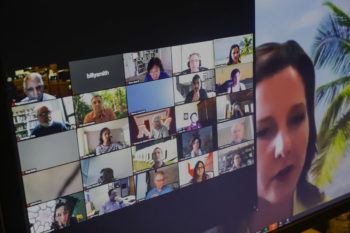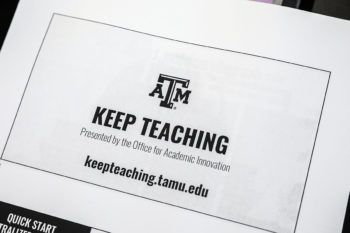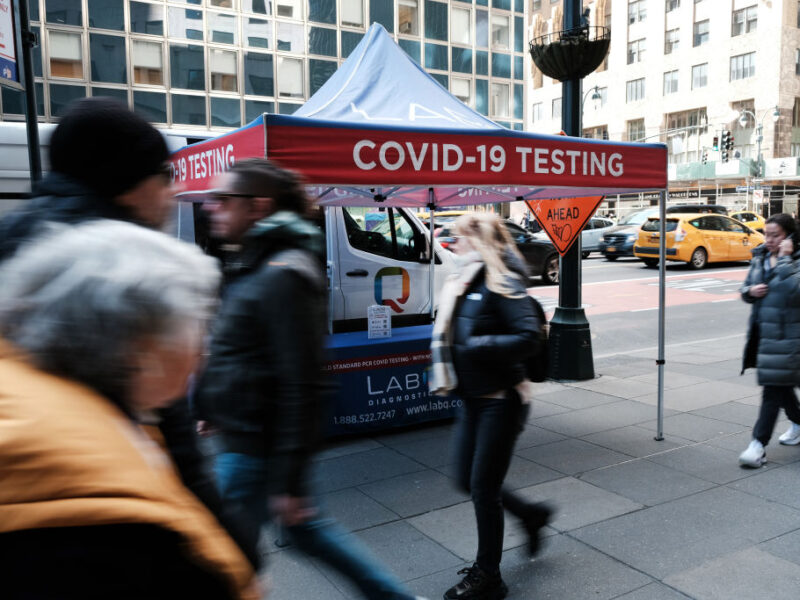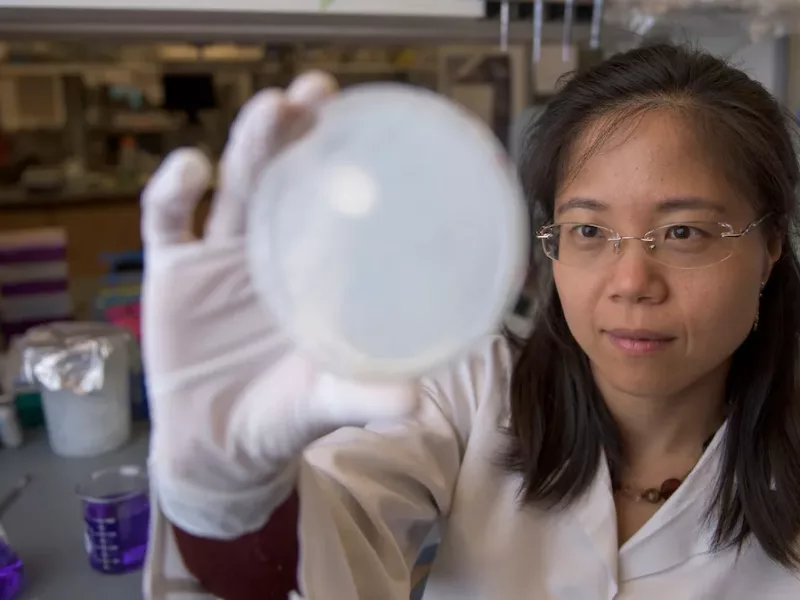Texas A&M’s Quick Move To Online Courses Deemed A Success

Under deadline pressure to move almost 13,800 courses online after COVID-19 was upgraded to a pandemic, Texas A&M University successfully transferred 57,871 of its students and 2,988 faculty members to virtual classrooms. And they did so in just seven business days, though traditional circumstances likely would have required it take several years.
The 13,792 classes that shifted from traditional in-person sessions to the online format include those from the flagship campus in College Station, branch campuses in Galveston and Doha, Qatar, the School of Law in Ft. Worth, The Higher Education Center at McAllen, and various Health Science Center locations around the state.
“Typically a program takes about 18 months to get up and running online and you keep developing subsequent courses as students start taking them,” said Texas A&M Assistant Provost for Academic Innovation Jocelyn Widmer, one of the driving forces behind the transformation.
Widmer noted that comparing the creation of brand new courses and programs under the best of circumstances to moving existing classroom courses online during a pandemic is somewhat an apples-to-oranges scenario. But best practices used to create new online education at Texas A&M were adapted as efficiently as possible in the emergency situation, and as Widmer said, the fact it was accomplished in such a short time is attributed to the “Herculean efforts” of faculty, staff and students.
Texas A&M Provost and Executive Vice President Carol A. Fierke agreed, saying the transition to online classes was astounding, especially given the university’s size. “It was a team effort from top to bottom,” she said.
Fierke acknowledged that there have been “bumps in the road” but that the switch went better than she ever could’ve hoped.
“There were no major catastrophes. All the IT held up,” Fierke said. “I’m very proud of our faculty, staff and students who have worked hard to ensure a successful transition to continue their outstanding learning opportunities. The creativity and resilience I observed was absolutely amazing.”
Fierke said she expects the transition will lead to advancements in the future.
“The silver lining is this will move us forward in thinking about how we can better use technology for education in the future,” Fierke said. “I think it will have a long-term transformational effect on how we teach.”
Making the move

The announcement that classes would move online came March 12, and courses began 11 days later. Michael T. Stephenson, vice provost for academic affairs and strategic initiatives, said he couldn’t have been more proud of the university during those days.
“While it was hectic and challenging, everyone on this campus stepped up,” he said, noting the Office for Academic Innovation, the Center for Teaching Excellence and University Libraries all held online and in-person training for faculty. Additionally, departments had faculty cross-train their colleagues and instructional designers across the colleges were deployed to help instructors facilitate online instruction.
Widmer said that academic technology staff across the university worked in conjunction with AI and CTE to train faculty and teaching assistants to prepare for Keep Teaching. “We trained 1,400 through our efforts and we know that there were so many others out there who worked to train colleagues within colleges and departments to ensure the university was ready for March 23.”
“Provost IT, Enterprise Information Systems and the Division of IT worked overnight from Saturday to Sunday to make sure every single course section in the university had a shell in e-campus and Google Classroom,” Stephenson said. “In the face of a very difficult task, I was deeply moved by the way everyone at the largest university in the nation rallied to make an incredibly difficult situation go as well as it possibly could. It’s not perfect and there will be mistakes. But I could not be more proud of everyone – it was incredible.”
Keep Teaching, Keep Learning
An integral part of the transition are the sites Keep Teaching and Keep Learning. Widmer led the team that created the sites in just a few days. She said Keep Teaching was created through a large team effort that included faculty and staff, as well as the sharing of best practices among Texas A&M and other universities across the nation.
Widmer said the strategy behind Keep Teaching was threefold: evaluate where a faculty member was in the semester, keep teaching by transitioning the remaining learning activities so that they could function in an online learning environment, and ensure communication with students remains central.
While Keep Teaching had many models across the country to learn from, Keep Learning had very few, Widmer said.
“For Keep Teaching there were over 200 university websites we consulted,” she said. “Unfortunately the landscape was not as robust on the Keep Learning sites. We found three to four that we used as a guide. We had a few students put together a Google Doc of some of their most pressing questions, and that created the scaffolding for Keep Learning.”
The Keep Teaching initiative placed an emphasis on Zoom to maintain real-time opportunities for faculty and students to engage.
Teaching via Zoom takes two forms: synchronous and asynchronous.
“In a course taught synchronously, a faculty member is teaching in much the same way she or he would in the classroom,” Widmer said. “Lectures are delivered and slides can be shown via Zoom’s Share Screen feature. Engagement is possible through the Manage Participant feature which allows students to raise hands, and the Chat feature allows them to ask questions.”
Focus on what inspires hope, brings joy and makes you feel whole. We can and will get through this together – Oriana Koot ’21, Memorial Student Center president
Widmer said collaboration is also possible through the Breakout Room feature, where faculty can divide students into groups to work in small-group settings.
“What is neat about the Breakout Room feature is that students can call the professor into their group to ask questions or get further clarification and the professor can move from group to group,” she said.
The other type of Zoom class, asynchronous, means a faculty member starts a Zoom session (likely without any participants) and delivers a lecture using the record feature which is made available for students to view on their own time. This more traditional approach to online delivery allows students to self-pace.
But, Widmer said, it’s the synchronous method that offers the most benefits to those who teach online.
“This is a fundamental shift in online education that we were just starting to see prior to COVID-19,” she said. “The norm with online education prior was to pre-package content and essentially remove the faculty member from the online student experience. With the synchronous approach, we are allowing students to have greater access to faculty with rich and dynamic exchanges that are so valuable to students.”
Concerns about academic integrity in these courses were tackled early in the process, Widmer said, and are continuing this month as meetings between the Office for Academic Innovation and faculty members are bringing to light best practices. Keep Teaching’s section on Exam Proctoring helps guide faculty in conducting online exams and ensuring integrity.
Widmer concurred with Fierke’s “silver lining” assessment on the potential for future advancements as a result of the switch. “We are hearing success stories of faculty achieving certain student learning outcomes, or approaching subjects in ways they never considered – and each story ends with: ‘And I plan to use this when I go back to teaching face-to-face,’” she said.
There will never be a way to appropriately nor individually acknowledge all those who have contributed to the Keep Teaching and Learning initiatives, Widmer said, not only for their work now, but for what it will mean later on.
“The Aggie community at present is to be thanked. And the Aggie community of the future will be able to attribute innovations in teaching and learning to this unique moment in time,” she said.
The Nation’s Largest
Texas A&M’s Fall 2019 enrollment numbers (69,465) made it the largest university in the nation. Spring enrollment was reported at 64,961.
The disparity in the number of students then moved to online education (57,871) can be explained by a number of factors, including that more than 40 programs were already online and therefore not impacted, that some students were already only in online classes, and that some students are enrolled in courses that were unnecessary to convert online (such as research hours for graduate students, internships and student teaching).
Student Reaction
The move to virtual classes has been a challenge not only for faculty and staff, but for students as well, especially those who have never participated in online education. Stephenson said faculty and staff from across the university have been working diligently to help students succeed in spite of the challenges presented by the pandemic.
Student Body President Mikey Jaillet ’20 said the overwhelming majority of feedback that he and the Student Government Association have received from students has been positive.
“Of course there are minor issues and bumps along the way, but the ability of students and faculty alike to be flexible and work together to create a premier learning experience is a true testament to Texas A&M and its core value of excellence,” he said.
Oriana Koot ’21, Memorial Student Center president, said while the move to virtual classes has been challenging for students, she is taking comfort in knowing that the Aggie family is sticking together.
“It’s really helpful that all of my organizations are still virtually meeting, and that everyone is actively working to create virtual ways to engage and program,” she said. “It’s comforting knowing that we’re truly all in this together. Focus on what inspires hope, brings joy and makes you feel whole. We can and will get through this together.”
Visit Keep Teaching and Keep Learning for continued guidance for online education at Texas A&M.
Media contact: Lesley Henton, lshenton@tamu.edu





